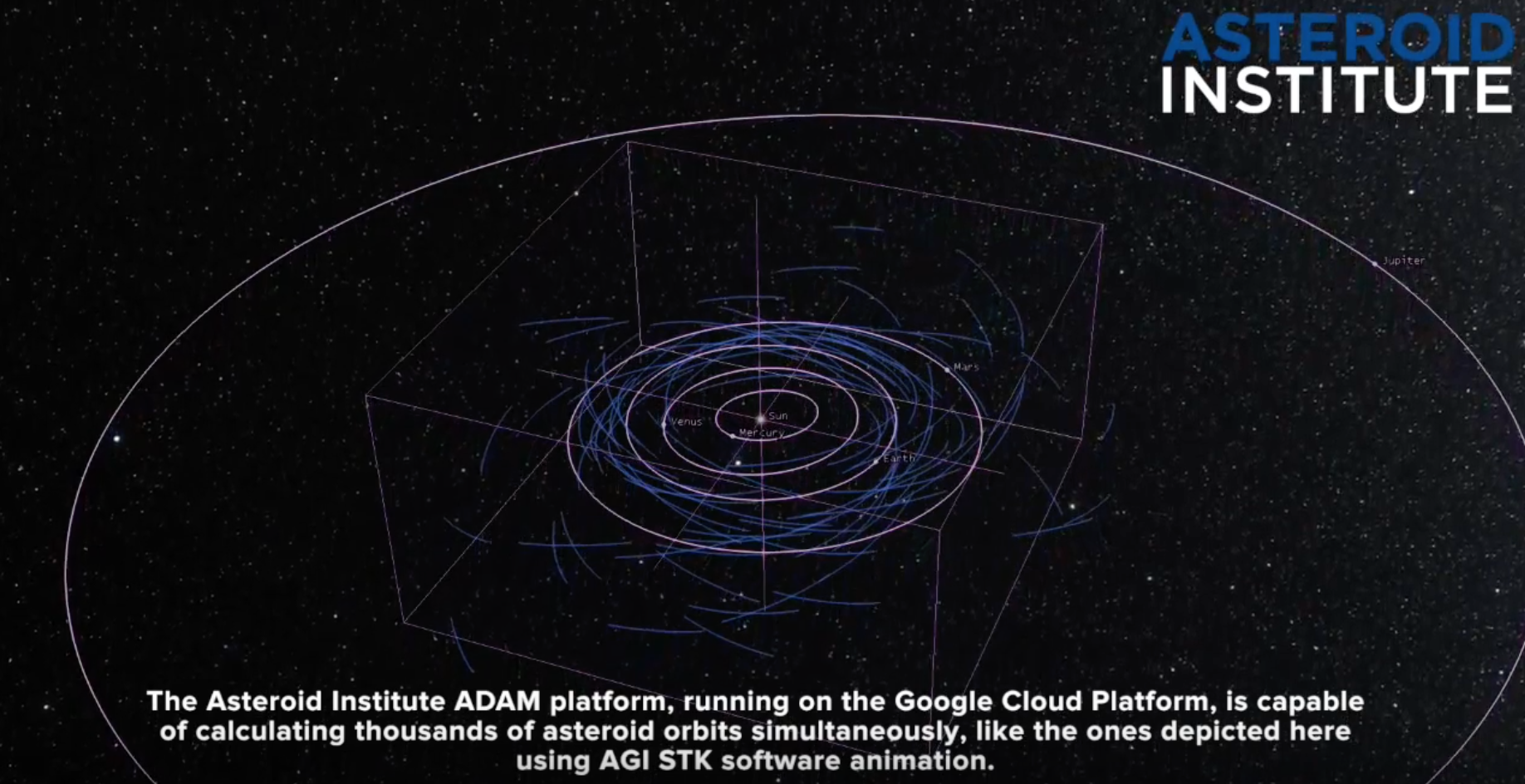ASTEROID INSTITUTE ANNOUNCES NEW APPOINTMENTS
Dr. Sarah Greenstreet and Bryce Bolin named
first Senior Research Fellows
SILICON VALLEY, CA/SEATTLE WASH. (May 17,2018) — The Asteroid Institute has announced new appointments in the field of planetary defense and asteroids. Dr. Sarah Greenstreet and Bryce Bolin have been selected to serve as the first Senior Research Fellows, under the direction of Dr. Ed Lu, Executive Director of the Asteroid Institute, three time NASA astronaut, former Google executive and co-founder of B612 Foundation. The fellows study the application of new technologies for the discovery, tracking and potential deflection of asteroids.
“When we established the Asteroid Institute, our goal was to continue to bring in the best and brightest in planetary science and data analysis to work with us to provide detailed information on asteroids to the scientific, business, and policy communities which need to make the difficult decisions of what to do in case we determine an asteroid is headed towards Earth,” stated Dr. Lu. “The work of Sarah and Bryce has been exemplary and we are very pleased to welcome them to the Institute.”
Dr. Greenstreet, with expertise in near-Earth and small body orbital dynamics, observations and main belt asteroid resonances, most recently served as a postdoctoral fellow at Las Cumbres Observatory (LCO) / Postdoctoral Scholar at University of California Santa Barbara (UCSB). She received her BS degree in physics and mathematics from Western Washington University and her MS and PhD degrees in Astronomy from the University of British Columbia. She has published numerous papers and has an exemplary record of achievement.
Bryce Bolin comes to the Institute from The Universite Cote d’Azur and the Institute for Astronomy at the University of Hawaii and University of Central Florida. His areas of expertise include dynamics of solar system small body populations, solar system formation, survey astronomy, optical observations, asteroid structure and formation, activated asteroids and comets. In December 2017, Mr. Bolin led a team of astronomers and astrophysicists to research and author of the study measuring 1I/’Oumuamua shape and rotation, and this research paper was recently printed in The Astrophysical Journal.
A key partner of the Asteroid Institute is the Data Intensive Research in Astrophysics and Cosmology (DIRAC) Institute of the University of Washington, where the first Institute Fellows reside. They will work closely with other DIRAC researchers, including teams involved in building of the Large Synoptic Survey Telescope (LSST) .
“We are tremendously excited to be the first partners to host Asteroid Institute fellows”, stated Dr. Mario Juric, DIRAC Faculty and the LSST Solar System Data Management Lead. “We’re looking forward to working with Sarah and Bryce on enabling the next generation of survey-driven discoveries in the Solar System.”

THE ADAM PROJECT
“The Asteroid Decision Analysis and Mapping (ADAM) project of B612 will be central to all of the work conducted at the Asteroid Institute,” explained B612 President Danica Remy. “In the next decade, we will see a surge of data emerge, as major assets, including LSST and hopefully NASA’s NEOCam go into operation. ADAM will provide the essential open-source, cloud-based infrastructure necessary for collaboration on large-scale orbital dynamics and related computations needed to analyze asteroid threats. With the goal of greater collaboration and transparency, ADAM will enable not only rapid calculations but also be able to run very large scale astrodynamics algorithms that will allow researchers to make sense of the enormous data set of asteroid observations. ADAM will enable the science, policy and business communities to identify, monitor, and analyze asteroid threats in order to make decisions on how to respond to specific threats from asteroids in our solar system.”
B612 FOUNDATION
B612 Foundation is the world’s leading non-profit organization dedicated to protecting Earth from asteroid impacts. The organization’s work is divided into two areas: public education and advocacy, and the development of new scientific and technological projects within the Asteroid Institute. The foundation is entirely funded by private donations.
The vision of the Asteroid Institute is to be the international center of excellence for scientific research and collaboration on the discovery and deflection of asteroids as well as an incubator for new technologies. Current major projects within the Institute include: postdoctoral research fellowships; ADAM, an open source cloud-based platform for asteroid data analysis and mapping; and the use of synthetic tracking as a means of increasing the rate of asteroid discovery. A key focus is the creation of a dynamic map of the inner solar system.. The map will be a critical resource for planetary defense, while contributing to our understanding of the origins of our Solar System and future space exploration.
Founded in 2002, by visionary astronauts Dr. Edward T. Lu, and Russell (Rusty) Schweickart Apollo 9, collaborators include: Caltech, Jet Propulsion Lab (JPL), Southwest Research Institute (SwRI), Analytical Graphics Inc (AGI), Google Cloud, and Data Intensive Research in Astrophysics and Cosmology Center (DIRAC) at the University of Washington.
|